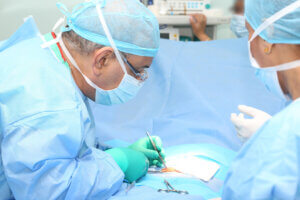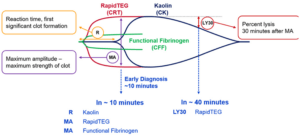1. The Use of Autologous Platelet Gel to Treat Difficult-to-Heal Wounds: A Pilot Study
Transfusion, 2004
BACKGROUND: Chronic ulcers can benefit from topical treatment with growth factors (GFs). Platelet (PLT) gel provides tissue regeneration-inducing GFs. The aim of this study was to verify the effectiveness of autologous PLT gel in the treatment of nonhealing skin lesions.
STUDY DESIGN AND METHODS: PLT gel was produced by treating PLTs with autologous thrombin. Two groups of patients were investigated: patients with dehiscent sternal wounds and patients with necrotic skin ulcers. Patients treated with PLT gel were retrospectively compared with patients having similar lesions but undergoing conventional treatment. The clinical endpoints of the study were the healing rate, the length of hospital stay, and/or the time required to bring about adequate tissue regeneration in order to undergo reconstructive plastic surgery.
RESULTS: In patients with treated dehiscent sternal wounds the healing rate (3.5 vs. 6.0 wks, p = 0.0002) and hospital stay (31.5 vs. 52.5 days, p < 0.0001) were significantly reduced. Patients with treated necrotic skin ulcers required a notably shorter time to have surgery (median 15.0 vs. 35.5 wks, p < 0.0001). Neither adverse reactions nor in-situ recurrences were observed.
CONCLUSIONS: Patients with chronic unhealing wounds showed substantial improvement when treated with PLT gel lesion dressings.
2. Platelet Gel for Healing Cutaneous Chronic Wounds
Transfusion and Apheresis Science. 2004
(Note: This article describes the use of Platelet Gel for chronic wounds using platelet concentrate harvested from donor blood for all but three of the study participants. While this study demonstrates significant wound healing outcomes using donor blood, Keystone Perfusion Services advocates and uses Platelet Gel derived 100% from the patient’s own blood.)
Wound healing is a specific host immune response for restoration of tissue integrity. Experimental studies demonstrated an alteration of growth factors activity due to their reduced synthesis, increased degradation and inactivation. In wound healing platelets play an essential role since they are rich of alpha-granules growth factors (platelet derived growth factor–PDGF; transforming growth factor-beta–TGF-beta; vascular endothelial growth factor–VEGF). Topical use of platelet gel (PG), hemocomponent obtained from mix of activated platelets and cryoprecipitate, gives the exogenous and in situ adding of growth factors (GF). The hemocomponents are of autologous or homologous origin. We performed a technique based on: multicomponent apheretic procedure to obtain plasma rich platelet and cryoprecipitate; manual processing in an open system, in sterile environment, for gel activation. Every step of the gel synthesis was checked by a quality control programme. The therapeutic protocol consists of the once-weekly application of PG. Progressive reduction of the wound size, granulation tissue forming, wound bed detersion, regression and absence of infective processes were considered for evaluating clinical response to hemotherapy. 24 patients were enrolled. They had single or multiple cutaneous ulcers with different ethiopathogenesis. Only 3 patients could perform autologous withdrawal; in the others homologous hemocomponent were used, always considering suitability and traceability criteria for transfusional use of blood. Complete response was observed in 9 patients, 2 were subjected to cutaneous graft, 4 stopped treatment, 9 had partial response and are still receiving the treatment. In each case granulation tissue forming increased following to the first PG applications, while complete re-epithelization was obtained later. Pain was reduced in every treated patient. Topical haemotherapy with PG may be considered as an adjuvant treatment of a multidisciplinary process, useful to enhance therapy of cutaneous ulcers.




